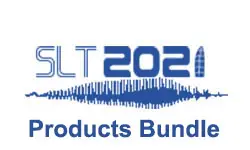On The Usefulness Of Self-Attention For Automatic Speech Recognition With Transformers
Shucong Zhang, Erfan Loweimi, Peter Bell, Steve Renals
-
Members: FreeSPS
IEEE Members: $11.00
Non-members: $15.00Length: 0:13:37
19 Jan 2021
Self-attention models such as Transformers, which can capture temporal relationships without being limited by the distance between events, have given competitive speech recognition results. However, we note the range of the learned context increases from the lower to upper self-attention layers, whilst acoustic events often happen within short time spans in a left-to-right order. This leads to a question: for speech recognition, is a global view of the entire sequence useful for the upper self-attention encoder layers in Transformers? To investigate this, we train models with lower self-attention/upper feed-forward layers encoders on Wall Street Journal and Switchboard. Compared to baseline Transformers, no performance drop but minor gains are observed. We further developed a novel metric of the diagonality of attention matrices and found the learned diagonality indeed increases from the lower to upper encoder self-attention layers. We conclude the global view is unnecessary in training upper encoder layers.



